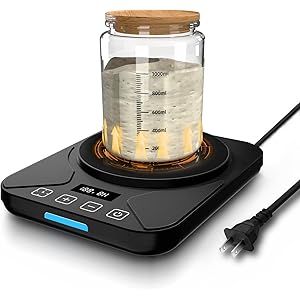Understanding Yeast: Prokaryotic or Eukaryotic?
Yeast is a fascinating organism that plays a crucial role in various biological processes, particularly in fermentation. To determine whether yeast is prokaryotic or eukaryotic, we must first understand the fundamental differences between these two classifications of life forms. Prokaryotic organisms, such as bacteria, are characterized by the absence of a nucleus and membrane-bound organelles, while eukaryotic organisms possess a defined nucleus and complex cellular structures. This distinction is essential in microbiology and genetics.
The Classification of Yeast
Yeast belongs to the kingdom Fungi, which is part of the eukaryotic domain. This classification indicates that yeast cells contain a nucleus and other organelles, such as mitochondria and endoplasmic reticulum. The most commonly studied yeast species, Saccharomyces cerevisiae, is widely used in baking and brewing due to its ability to ferment sugars into alcohol and carbon dioxide. Understanding that yeast is eukaryotic helps in comprehending its cellular processes and metabolic pathways.
Characteristics of Eukaryotic Cells
Eukaryotic cells, including those of yeast, exhibit several defining characteristics. They have a well-defined nucleus that houses genetic material, allowing for more complex regulation of gene expression. Additionally, eukaryotic cells have a cytoskeleton that provides structural support and facilitates intracellular transport. These features enable yeast to perform various functions, such as reproduction through budding and the ability to adapt to different environmental conditions.
Yeast Reproduction and Life Cycle
Yeast primarily reproduces asexually through a process called budding, where a new cell forms from the parent cell. This method of reproduction is efficient and allows for rapid population growth under favorable conditions. Some yeast species can also undergo sexual reproduction, which involves the fusion of two haploid cells to form a diploid cell. This versatility in reproduction is a hallmark of eukaryotic organisms, distinguishing them from prokaryotic bacteria, which typically reproduce by binary fission.
Yeast Metabolism and Fermentation
One of the most significant aspects of yeast is its metabolic capabilities. Yeast can metabolize sugars through fermentation, producing ethanol and carbon dioxide as byproducts. This process is not only vital for baking and brewing industries but also for biofuel production. The eukaryotic nature of yeast allows it to utilize various metabolic pathways, including aerobic and anaerobic respiration, providing it with the flexibility to thrive in diverse environments.
Get more content like this!
Sign up to receive updates and new terms first hand.
Genetic Studies and Biotechnology
Yeast serves as an important model organism in genetic studies due to its eukaryotic characteristics. Researchers utilize yeast to understand fundamental biological processes, including cell division, gene regulation, and protein interactions. Its relatively simple genome and rapid growth make it an ideal candidate for biotechnological applications, including the production of recombinant proteins and the study of genetic diseases.
Yeast in Ecosystems
In natural ecosystems, yeast plays a vital role in nutrient cycling and decomposition. As eukaryotic organisms, yeast contribute to the breakdown of organic matter, facilitating the release of nutrients back into the soil. This process is essential for maintaining soil health and supporting plant growth. Additionally, yeast interacts with other microorganisms, forming complex communities that enhance ecosystem resilience.
Industrial Applications of Yeast
The industrial applications of yeast are vast and varied. In the food industry, yeast is indispensable for the production of bread, beer, and wine. Its eukaryotic nature allows for the manipulation of its genetic makeup to enhance desirable traits, such as increased fermentation efficiency or resistance to stress. Furthermore, yeast is utilized in the production of biofuels, pharmaceuticals, and even as a source of protein in animal feed.
Conclusion: The Eukaryotic Nature of Yeast
In summary, yeast is unequivocally classified as a eukaryotic organism. Its complex cellular structure, reproductive strategies, and metabolic capabilities highlight its distinction from prokaryotic organisms. Understanding the eukaryotic nature of yeast is essential for leveraging its potential in various scientific and industrial applications, making it a subject of ongoing research and interest.



